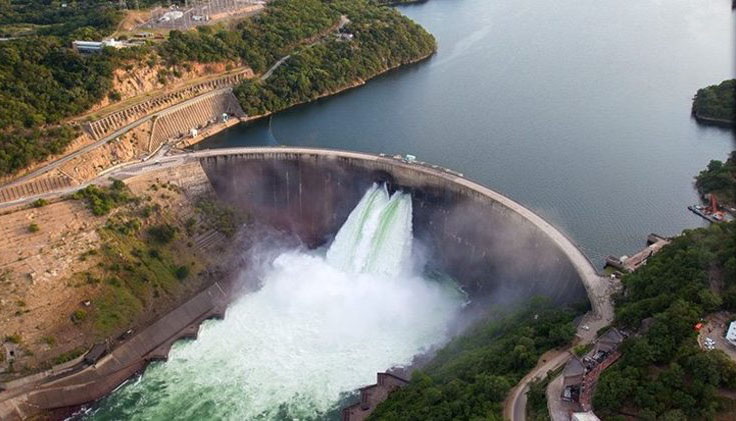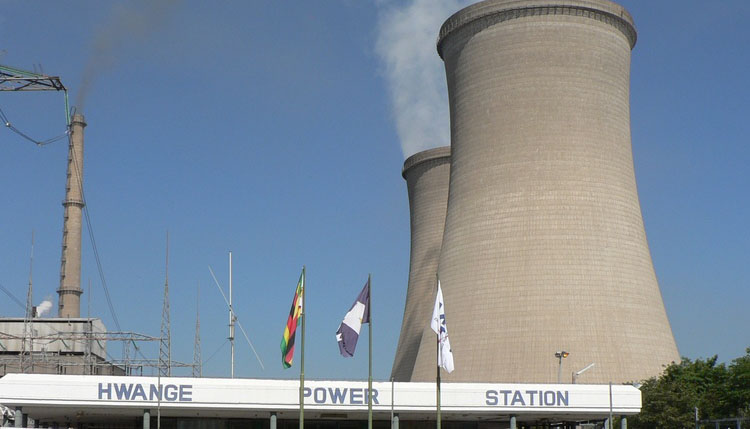
The Sunday Mail

Golden Sibanda
Local power supply is set for significant improvement as State power utility Zimbabwe Power Company (ZPC) is expected to have all eight generators at Kariba Power Station feeding into the national grid by end of this month.
The hydro-power station had six generating units, each with a capacity of 125 megawatts and combined output of 750MW before the recently completed $533 million expansion project added two more generating units with capacity to generate 150MW each. The extension project for Kariba South was completed in March this year, which saw President Mnangagwa commissioning the power station on April 10.
Zesa Holdings group chief executive Engineer Josh Chifamba told The Sunday Mail Business in an interview last week that supply and availability of power in the country would improve markedly on the back of more generators coming on line.
He said Zesa’s power generation arm, ZPC, had been producing an average of 700MW while on selected occasions, the power utility was able to scale up production to about 1 000MW. The extended plant now has combined capacity of 1 050MW.
“We have made significant strides at Kariba. We have been producing 700MW on average, and at times 1 000MW and by end of this month we will have all units generating power, this is good. We will be running Kariba as a base load station. This will reduce our cost of importing power,” he said.
The country has been importing 300MW from Eskom and 50 MW from Hydro Cahora Bassa of Mozambique.
ZRA allocates more water
Eng Chifamba said higher output follows an increase in water allocated for power generation by the Zambezi River Authority (ZRA), which is charged with administering the affairs of the Zambezi River, which feeds the Kariba Dam.
“There is more water now (in the Kariba Dam). Zimbabwe River Authority increased water allocation,” Eng Chifamba stressed, adding higher output will result in less dependency on imports.
The operation of Kariba Power Station as a base load plant means the station will not only increase generation to meet higher demand during peak periods, but will produce consistently at a higher output level during peak and off peak periods.
Lake Kariba, from which Zimbabwe and Zambia draw water for power generation on the northern and southern banks of the world’s biggest man made water reservoir, sits on the Zambezi River.
Eng Chifamba would not give figures in terms of the increase in water allocation by ZRA, but said the situation prevailing represents significant improvement from last year, when limited water saw generation dropping to an average of 285MW.
The Zimbabwe National Water Authority says as at July 16, 2018, Kariba Dam was 86 percent full.
In 2015 and 2016, Southern Africa and the Zambezi River catchment in particular received average to below-average rainfall because of the El-Nino weather phenomenon, which resulted in drastic drop in the Kariba Dam water levels. This saw its water storage dropping to as a low as 20 percent of capacity.
This prompted ZRA to ration water use for both Zambia and Zimbabwe for purposes of power production to avoid depleting the lake.
However, media reports recently say state-owned Zambia Electricity Supply Corporation (Zesco) and its counterpart ZPC are expected to jointly use about 23 billion cubic meters of water for the remainder of 2018, bringing total annual allocation to 45 billion cubic meters.
“This is an increase of 32 percent from the original 2018 water allocation and is expected to help increase electricity generation at Kariba Dam,” ZRA was quoted by Bloomberg.
Power situation in Zim
Zimbabwe has been spending an average of USD10 million on imports to meet internal power deficits.
Zimbabwe raked up arrears running into several millions (over $50 million) after struggling to pay Eskom of South Africa due to foreign currency shortages in the country.
Demand for power in Zimbabwe averages 1 400MW, but the country’s previous international generation capacity, before Kariba South Power Station capacity was extended, could only produce 1 200MW. The deficit was met through imports from mainly South Africa and Mozambique, but on certain occasions from Zambia.
Zimbabwe’s other major source of electricity is Hwange Power Station, which has installed capacity of 920MW, but is currently only able to generate an average of 550MW due to antiquated equipment.
Hwange Power Station is set to undergo a $1,4 billion expansion program which will increase its generation capacity by 600MW.
Several other independent power producers have been licenced but the most promising project to increase internal generation is a joint project between Zimbabwe and Zambia, which will see the construction of a power plant at the Batoka Gorge on the Zambezi River, which will generate 2 400MW.
But even soon after Kariba South power station’s generation capacity was extended from 750MW to 1050MW, it was not immediately possible to run the plant full throttle due to water limitations.
Lake Kariba’s catchment area straddles Southern Africa from Zimbabwe through Zambia’s Barotse plains, Angola and parts of the Democratic Republic of Congo (DRC).






